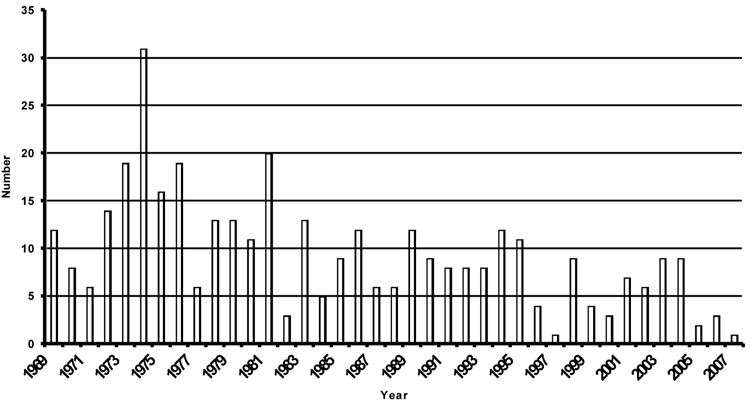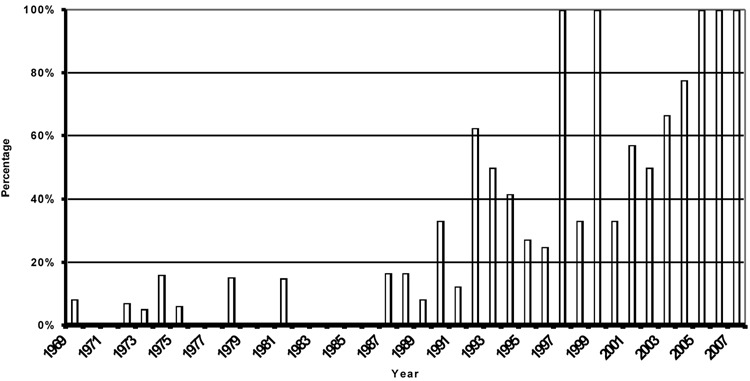Analyzing Cave Diving Fatalities: Cave Diving Deaths Per Year
The number of cave diving fatalities has been decreasing over the last three decades, from eight to less than three. However, it is important to note that the proportion of trained divers among those fatalities has doubled. Approximately 95% of all cave diving deaths were people who were not properly trained in cave diving. The available data and statistics suggest that following accepted protocols is keeping the cave diver mortality rate low. Reliable information about the total number of cave diving deaths worldwide is rather limited. In raw numbers, roughly 10 cave divers die in caves every year on average.
Reputable information concerning the yearly count of cave diving fatalities worldwide remains rather limited. Existing data and statistics, however, suggest that adhering to established protocols has played a pivotal role in maintaining a low mortality rate among cave divers.
Nevertheless, several identified contributing factors include:
- Failure to employ a continuous guideline back to the open water, particularly prevalent among untrained cave divers.
- Excessive depths, even among certified cave divers.
- Depletion of gas reserves before reaching the cave exit due to factors such as getting lost or experiencing panic underwater.
Historically, cave diving analyses revealed that approximately 90% of cave diving accidents were attributed to untrained divers. However, starting from the year 2000, the accident trend experienced a significant shift, with approximately 80% of incidents now involving certified cave divers.
As a result, there was a noticeable rise in cave diving accidents, with an average of 2.5 fatalities per year recorded in 2011. However, the fatality rate reached its peak the subsequent year, in 2012, with more than twenty (20) reported deaths. Explore the cave diving death per year phenomenon in-depth in this comprehensive analysis
According to data collected by Divers Alert Network (DAN) from July 1, 1985, and June 30, 2015 we identified a total of 161 divers who tragically lost their lives during cave diving expeditions. Of these, 67 were trained cave divers, while 87 were untrained. Remarkably, the annual number of cave diving fatalities showed a consistent decline over the three decades, dropping from eight to fewer than three fatalities per year. However, a notable shift occurred in the composition of these fatalities, with the proportion of trained divers doubling over time.
What are the most common causes of death in cave diving accidents?
The most common cause of death in cave diving accidents is asphyxia due to drowning. This is often preceded by running out of breathing gas, usually after getting lost owing to a loss of visibility caused by suspended silt. Poor gas management, poor buoyancy control, equipment misuse, entrapment, rough water conditions, and pre-existing health problems are also contributing factors to cave diving fatalities. It is important to note that an overwhelming majority of the fatalities occurred in the state of Florida where many flooded caves are located. Additionally, it is worth mentioning that approximately 95% of all cave diving deaths were people who were not properly trained in cave diving
What percentage of cave diving deaths are due to equipment failure?
Among the 1000 incidents reported, 105 involved equipment failure, and in 27, the diver died. Fifty-four percent involved the regulator and air supply, 23% the BC, 13% computers and depth gauges, and 10% other equipment. DCS was the most common cause of death (14), while pulmonary barotrauma, embolism, ear barotrauma, and drowning were also causes .
Another source suggests that a significant percentage of deaths are associated with equipment failure (35%) or misuse (35%). However, the same source also mentions that equipment failure per se was uncommon.
Additionally, another source states that fewer than 5% of fatalities are due to malfunctioning or misuse of weight belts, harnesses, masks. It is important to note that the available data and statistics suggest that following accepted protocols is keeping the cave diver mortality rate low. Nonetheless, equipment failure can be one of the contributing factors to cave diving fatalities.
What are some safety measures that can be taken to reduce the risk of cave diving fatalities?
- Proper training: Do not even consider entering a cave unless you are properly trained to do so. About ninety percent of diving accidents involve a lack of formal training. Cave diving is a highly technical and challenging form of diving that requires extensive training and experience.
- Acknowledge your mortality: It is important to acknowledge the risks involved in cave diving and to understand that accidents can happen to anyone. This mindset can help you make better decisions and avoid taking unnecessary risks.
- Gas management: Keep two-thirds of your starting gas in reserve to exit the cave. Proper gas management is crucial in cave diving, and divers should always carry enough gas to complete the dive and return to the surface safely.
- Dive in a group: When diving in a group, remember the dive buddy system that will improve your chance of avoiding accidents underwater. Diving with a partner can help you stay safe and respond quickly in case of an emergency.
- Use continuous guideline: Always use continuous guideline from the entrance of the cave (open water) for the duration of the dive. Violating this simple rule is the most common reason for accidents in cave diving.
Despite advancements in technology and increased awareness, the fundamental hazards faced by cave divers have remained remarkably consistent. As we continue to explore the depths of underwater caves, it is crucial to persist in developing preventative interventions to address these enduring risks and ensure the safety of cave divers worldwide.


